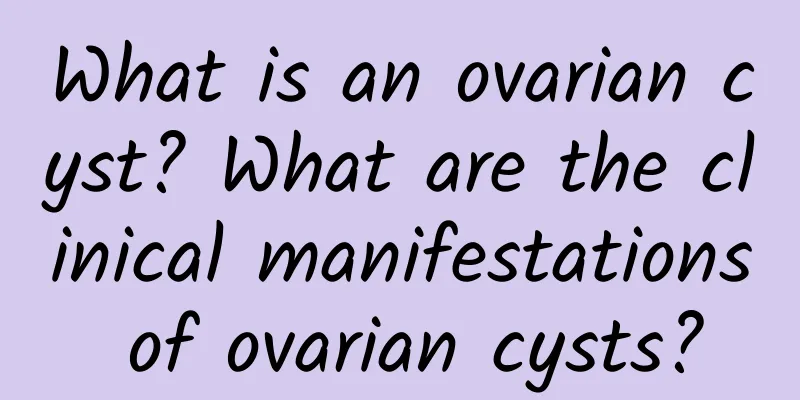What is an ovarian cyst? What are the clinical manifestations of ovarian cysts?

|
Many people say that women have two secret gardens, one is the face and the other is the ovaries. Since the ovaries are so important to us women, we must take good care of them. So what are ovarian cysts? 1. What is an ovarian cyst? The ovaries are a pair of gonadal organs unique to women, located on both sides of the uterus in the pelvic cavity. Its main function is to produce eggs and secrete sex hormones, which are closely related to women's physiological cycle and fertility. Like many other organs in the body, the ovaries can also develop some lesions. When cysts containing fluid are formed in the ovarian tissue due to various physiological or pathological factors, they are called ovarian cysts. 2. If an ovarian cyst is found, how can we distinguish whether it is physiological or pathological? Generally speaking, physiological ovarian cysts may disappear with menstrual changes. They are usually followed up for 3 to 6 months and gynecological ultrasounds are repeated. If the cyst is larger than 5 cm in diameter and persists or tends to grow, it is often pathological and requires surgical treatment. 3. Will ovarian cysts disappear? Once an ovarian cyst is discovered, the first thing to do is to decide whether to follow up the patient closely or to undergo aggressive surgical treatment. Most scholars believe that women of childbearing age with ovarian cysts less than 5 cm in diameter and asymptomatic can be closely followed up, as 70% of cysts can regress spontaneously. During the follow-up of patients, attention should be paid to B-ultrasound and pelvic examination. According to literature reports, the natural regression rate is 82.6% for cysts with a diameter of less than 4 cm, 63.4% for cysts with a diameter of 4 to 6 cm, and 28.6% for cysts with a diameter of 6 to 8 cm. The complete regression time can be as long as 3 months. 4. What are the clinical manifestations of ovarian cysts? Clinically, ovarian cysts are often manifested by lower abdominal pain, lower abdominal discomfort, increased vaginal discharge, yellow vaginal discharge, vaginal discharge odor, irregular menstruation, and usually a firm and painless mass in the lower abdomen, and sometimes painful sexual intercourse. When cysts interfere with hormone production, symptoms such as irregular vaginal bleeding or increased body hair may occur. If the cyst twists, there will be severe abdominal pain and distension, difficulty breathing, lack of appetite, nausea and fever. Larger cysts can put pressure on the bladder, causing frequent urination and difficulty urinating. Especially when these symptoms are severe, bleeding is frequent and occur at the same time, the possibility of having an ovarian cyst is higher. |
<<: Does mumps cause facial paralysis? What is the main cause of facial paralysis?
>>: Three behaviors can cause vaginal lacerations, don’t say you don’t know any of them!
Recommend
The effects of deer blood capsules
For most people, they will gradually age after th...
When is the best time to take antipyretics?
Generally, antipyretic drugs are Western medicine...
What are some habits that damage your kidneys?
With the progress of society, the pace of people&...
I drank something cold after 10 days of medical abortion
Anyone with common sense knows that after a misca...
Is liver cancer contagious?
We know that hepatitis B is contagious, and if he...
How many days after menstruation can you test for early pregnancy
Menstruation is an important physiological charac...
Methods to aid digestion
If we don't digest, it will not only cause us...
A review of the treatment methods for chronic glomerulonephritis
Patients with chronic glomerulonephritis must pay...
Laparoscopic fallopian tube surgery
The fallopian tube laparoscopy technology mainly ...
What is liver hemangioma and what causes it?
Although hepatic hemangioma is a benign tumor, it...
Common knowledge about acute appendicitis
Speaking of acute appendicitis, I believe many fr...
What causes sour mouth when eating?
I believe everyone has experienced this situation...
Should I take Maca in the morning or at night?
When taking a Chinese herbal medicine like Maca, ...
How to recover from long-term excessive hand floating
Many people may not know how to recover from long...
What to do if you keep coughing after catching a cold
When the weather changes drastically, people'...









